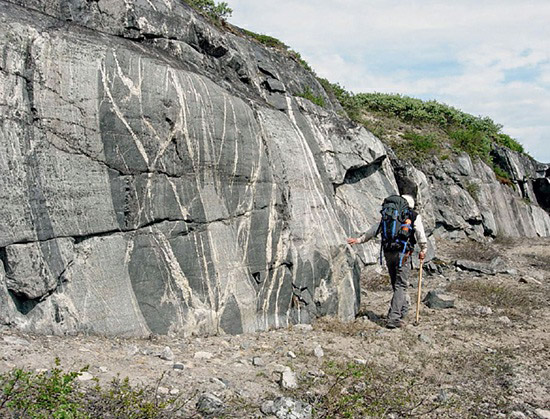The Earth’s continental crust has evolved from the dense, molten magnesium- and iron-rich rocks that initially formed the early mantle. These rocks, known as mafic basalts, are characterized by their richness in magnesium and iron (Fe) and their low silicon, sodium, and potassium content compared to other volcanic rocks. Constantly undergoing melting, reprocessing, and recycling, these rocks have been pivotal in shaping the Earth’s crust.
When basaltic rocks undergo remelting within confined underground spaces, such as magma chambers beneath volcanoes or within large subsurface volumes like batholiths, they start a mini-version of the differentiation process. This process involves the segregation of heavier and lighter elements, with heavier ones sinking and lighter ones rising. As the melt cools and begins to solidify, minerals crystallize in a specific order. Mafic minerals like olivine crystallize first and settle at the bottom, while higher silicon minerals such as feldspar and eventually quartz crystallize later, concentrating near the top.
This process of fractional crystallization was first understood by Canadian petrologist Norman L. Bowen in 1928, known today as Bowen’s Reaction Series. The high-silica components formed through this process are termed felsic minerals (from “feldspar-rich”).
The repeated recycling of mafic rocks results in the creation of younger, less dense felsic rocks. These felsic rocks “float” on the denser mafic basalt crust, forming the early building blocks of the Earth’s protocontinents. Geologists refer to the ancient, initial cores of the continents as cratons or shields when widely exposed. Although only a few major shield regions have survived from the early history of Earth, they played a crucial role through plate tectonics in fostering the growth and accretion of more continental crust, which now constitutes about 40 percent of our planet’s surface.

